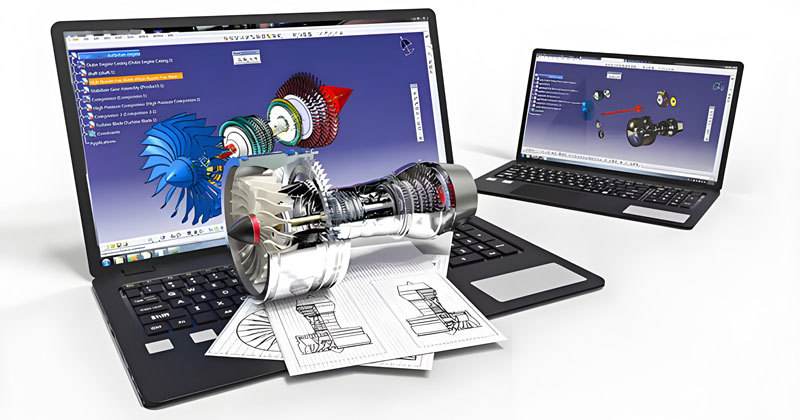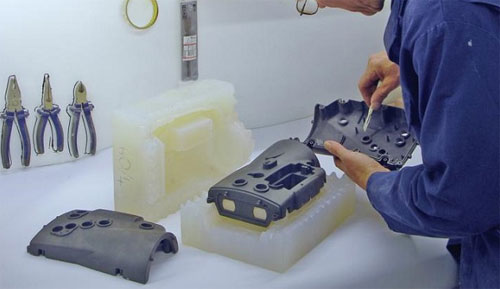Plastic Prototyping Guide: What are my options?
- December 17, 2024
- Tony
- Last updated on October 25, 2025 by Lucy

Plastic prototyping is a key tool in product development, helping to validate designs, test functionality, and refine appearance. Whether developing a new product or improving an existing one, plastic prototyping plays a crucial role.
1. What is plastic prototyping?

Plastic prototypes are preliminary product models created through different manufacturing techniques, typically used in the early stages of product or component development to help design teams evaluate and validate designs.
What type of prototype do I need?
The type of plastic prototype depends on the development stage:

- Rapid Form Prototyping: Mainly for showcasing product appearance and dimensions, with limited functionality. Ideal for verifying form and ergonomics.
- Intermediate Functional Prototyping: Offers basic functionality for testing performance or fit, often used for small batch testing.
- High-Resolution Prototyping: Highly accurate with fine details, suited for products requiring precision and complex designs.
The meaning of plastic prototyping
In product development, plastic prototyping is essential for quickly validating and refining designs. It enables teams to identify and correct potential design flaws early, minimizing the risks and costs associated with production.
Preparing for Plastic Prototyping
Before starting, make sure to complete these steps:
- Design Confirmation: Ensure all design and functional requirements are clear.
- Material Selection: Choose the right plastic material for the prototype.
- Budget and Time Planning: Define the budget and timeline to ensure timely completion of the prototype.
2. What are the common plastic prototyping technologies?
Several plastic prototyping techniques are commonly used, each offering unique advantages depending on the project requirements:
3D Printing
Ideal for low-volume production and complex designs. Offers flexibility and fine detail. Perfect for quickly proving design concepts.
CNC Machining
Uses computer-controlled tools to cut plastic materials. Ideal for prototypes needing high precision and larger sizes. Best for functional prototypes and mid-term testing.
Injection Molding Prototyping

Involves injecting molten plastic into molds. Suitable for high-volume production and durable, functional prototypes.
Vacuum Casting

Pours liquid plastic into a mold and cures it in a vacuum. Excellent for small-volume, functional prototypes with high surface quality.
3. Which plastic prototyping technology should I use?
The right prototyping method depends on the part’s purpose, quantity, budget, timeline, and design complexity. Here’s a quick guide:
- Part Usage:
For functionality testing: CNC machining, injection molding, or vacuum casting.
For appearance testing: 3D printing.
- Production Quantity:
For small quantities: 3D printing or vacuum casting.
For large quantities: Injection molding.
- Budget and Time:
Limited budget or time: 3D printing or vacuum casting.
Higher budget or more time: CNC machining or injection molding.
- Design Complexity:
For complex shapes: 3D printing or CNC machining.
✅ CASE STUDY: Automotive Sensor Housing
We recently worked with an automotive client who needed a functional prototype for a new engine sensor housing. Here’s how we approached it:
Requirements:
- Material: Glass-filled nylon (30% GF)
- Dimensions: 85mm × 60mm × 45mm
- Wall thickness: 2.5mm (±0.1mm)
- Temperature resistance: 180°C continuous
- Quantity: 50 units for field testing
- Timeline: 3 weeks from design to delivery
Solution: We used CNC machining for the initial 10 units to validate the design and fit, then switched to vacuum casting for the remaining 40 units to maintain dimensional stability while reducing cost and lead time.
Results: The client received fully functional prototypes that survived 500-hour thermal cycling tests and fit perfectly into their engine assembly. This approach saved them approximately 35% compared to using only CNC machining for all units.
4. What are the common materials used for plastic prototyping?
Different prototyping techniques require different types of plastic materials. The following are common materials associated with each technology:
CNC Machining
Engineering plastics such as polycarbonate (PC), polyethylene (PE), and polypropylene (PP) are often selected for their ability to withstand high stresses and temperatures.
Injection Molding Prototypes
ABS, polypropylene (PP), and polyester (PET) are commonly used, as they offer excellent strength and durability for injection molding.
Vacuum Casting
Silicone and polyurethane (PU) are popular choices for creating high-quality functional prototypes with precise details.
5. How can I get a plastic prototype made?
Making a plastic prototype usually involves the following steps:
- Choose a Manufacturer: Start by choosing a trusted plastic prototyping partner with the right expertise and equipment. Allied Metal is known for delivering high-quality prototypes with advanced technology and tailored solutions to meet your project needs.
- Confirm Design and Materials: Work with the manufacturer to finalize the design, materials, dimensions, and functionality of the prototype based on your requirements.
- Manufacturing Process: Once everything is approved, the manufacturer will start production using the most appropriate prototyping method.
- Test and Evaluation: Upon receipt of the prototype, it is tested and evaluated to ensure that it meets all your expectations and functional requirements.
6. Conclusion
Plastic prototyping is essential in product development, helping teams refine designs, minimize errors, and accelerate time to market. The right prototyping techniques and materials depend on your project’s specific needs. By understanding the available options, you can make informed decisions that keep your project on track.
If you still have any questions, don’t hesitate to reach out to our expert team for a free consultation!


